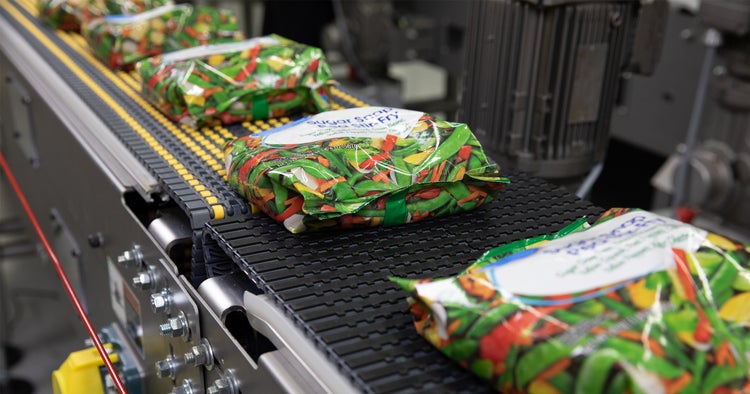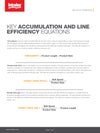Accumulation: Maximizing Line Efficiency and Production Volume
Understanding accumulation to maximize line efficiency and production volume
- Insights
- November 5, 2021

You know what accumulation is, but did you know it can increase efficiencies and production volume on your packaging lines to boost revenues?
Though it is one of the most easily identifiable aspects of a package processing line, accumulation can be difficult to fully understand. We spoke with Brian Antkowiak, Intralox Layout Development Manager, to better understand what accumulation is and how you should be calculating it to improve your packaging line performance.
With new product sizes and rates introduced, accumulation on a conveyor system can become inadequate over time. Intralox can perform an analysis to determine the optimal amount and location of accumulation for a line given current or future expected conditions.
Intralox Layout Development Manager
What You Need to Know
Accumulation is complex and increasingly important when seeking to improve uptime. Before you can increase uptime, you need to know what factors impact your accumulation analysis. Then you can begin to calculate how much accumulation you need. Antkowiak shared what end users need to know when looking to increase production line performance through accumulation:
- Each major operation in the packaging equipment line
- Maximum production rates when fully fed and uninhibited
- Time between machine failure or other downtime events
- Time to repair
- Conveyor speeds
Once you know these, Antkowiak says you can begin calculating how much accumulation is needed between machines and proactively increase performance.
Intralox Team Tip: Identify the machine most critical to your packaging line and make sure you have enough accumulation and upstream machine overspeed before it to keep it fully fed with product and materials even when the upstream machine goes down for a period of time.
Likewise, be sure you have enough accumulation and downstream machine overspeed after the critical machine to be able to deposit processed product when the downstream machine goes down for a period of time.
Calculating Your Accumulation Needs
Defining the information listed above can be challenging, but not impossible. Some options include:
- Referring to equipment performance data reports
- Working with OEMs to provide expected performance metrics and time to complete typical tasks
- Hiring outside engineering firms to conduct line audits
- Observing production lines and testing to measure the individual data points
If you opt to tackle calculating how much accumulation you need yourself, you must understand your packaging equipment and conveyance.
“You must be aware of the style of accumulation you are using and how densely populated it can be,” says Antkowiak. He suggests asking yourself:
- Do you use a zoned belt-under-roller zero back pressure style of accumulation, and are you going to be able to get 100% density from the accumulation, meaning there are no gaps between products?
- Or do you use an MDR (motor driven roller) style of accumulation, where you’ve got defined section lengths on which only one product will accumulate?
- Or do you use low back pressure accumulation, and what non-accumulating section breaks will be needed to prevent excessive back pressure?
Your style of accumulation and the above factors are your foundation for calculating how much you will need on your packaging lines. Once that is determined, you can move on to the next areas of focus in the calculation: conveyor speed and the gap between each product when a line is in steady state. The relationship between the speeds of your conveyors and the product rate of the upstream machine dictates how large the gaps are between products. Ultimately, closing all the gaps between products is how much space you have available to accumulate.
Remember: There Is No “One Answer Fits All” Solution
You may have accumulation at different lengths and locations to achieve your desired goals and outcomes. If your accumulation needs are centered around what your production volume output needs to be, what your waste rate target is, and/or what your efficiency targets are, you will find the right accumulation needs for your packaging lines.
Interested in Intralox’s line layout optimization services? Visit our Line Layout Optimization page and connect with us early on in your projects to learn what our experts can do for you.

Brian Antkowiak is a Layout Development Manager at Intralox and the author of our “Flexible or Direct?” white paper series. He helps guide our customers in choosing the right line layout designs based on their unique needs and the technologies available through Intralox and the marketplace.

